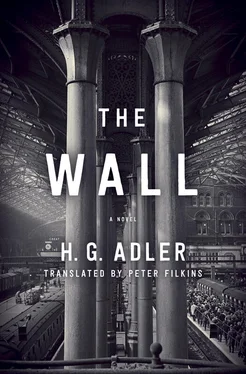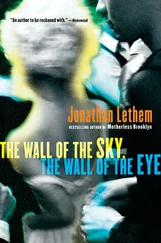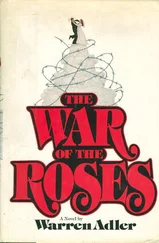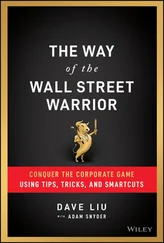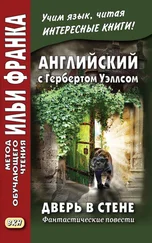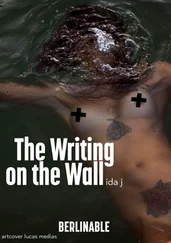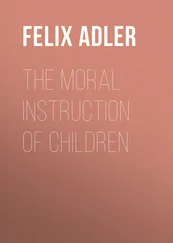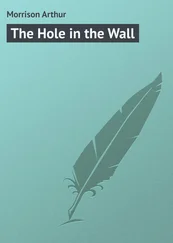“Eugene Lebenhart and Emmi Lebenhart. Hey, that’s the Lebenharts from Ufergasse! They must have had some nice things.”
“Not really.”
“A lot of it is broken. Sure. Yet they had money once.”
“You always know everything, and everyone.”
“Of course, I knew them. You don’t believe me? Who, I ask you, didn’t know them! Fancy goods, that was quite a shop! They did a tremendous business!”
“Buy something for yourself!”
“I can’t buy anything. But they used to be rich, that I can tell you.”
“No, what did they have left of it?”
“Left of it.… You got it all!”
The men said nothing more about how good things had once been for Eugene and Emmi Lebenhart, nor did they say anything much, for they had to hurry. The cargo had to be quickly unloaded and stuffed in the ceremonial hall. All the furniture was carried, carpets were piled up, mirrors, glass, and such stuff handled with some care, so that it all didn’t rattle to pieces, books stacked on one another, kitchen stuff placed in the foyer, sewing stuff in the morgue, though for miscellaneous things there was no room. The turnkey complained that it was high time all this junk was cleared out, which the Department for House Clearings had to get through its head, what with every day more loads showing up and no room for all the plunder, which also needed to be sorted through. The inspector nodded, yes, there was no telling where to take it all. But the turnkey said that everything here was a mess, and he knew it. The workers pushed and shoved the load into the storehouse, the pictures also hauled in and placed in a corner where many others lay in the dark. Then the inspector left with his workers. Soon after the warehouse was so full that finally others listened to the turnkey and hauled most of the rest away.
The pictures went to the school, three classrooms filled with them. They were hauled upstairs, one after another, not very gently or orderly, only the big ones being watched out for. Thus all the things from the house were stacked up and banished, thirty and fifty of them at a time. With battens they cut from laths, the stacks were secured so that they didn’t collapse, narrow passages between remaining free.
Herr Schnabelberger opened up and led me into the first room. The air was muggy and warm, a sweet gray mustiness rising up in the darkened room, into which daylight wearily spread its yellow through windows half blocked off by shades. My eyes would soon have gotten used to this darkness, which felt a bit odd, but Herr Schnabelberger snapped on the light, it flooding the room with a brownish-yellow glow that reminded me of mellow apples in bins from the previous year’s harvest.
“You’re not really an art historian, but that doesn’t matter, Herr Dr. Landau. It’s good work. And you are intelligent and know how to help yourself. Otherwise, I will help you out when necessary. Here and in both rooms that I still have to show you is our collection of family pictures. All in all, there are around five thousand pieces. Some excellent examples, in which one recognizes right away the hand of a good painter, were separated out right away. The loveliest one is already in the exhibition room and is museum quality. But, also, the paintings in my room and what you see in the staircase are worth hardly less. We hope that someday we can hang it all in a dignified manner, restore any damage, and make them available to the public in a gallery of our museum. What’s here in this room and what otherwise might show up among the inventory of portraits is probably not worth very much, most of it weak, nothing more than trash, simply useless kitsch. People let themselves be painted by mawkish, fashionable painters, by ridiculous dilettantes, sometimes not even from life, but just from photos, flatteringly, and therefore clumsily flattered. There are even photos painted over with oil paint.”
Herr Schnabelberger stopped. I didn’t know whether he was expecting me to speak. In order just to say something, I quietly said, “So many, many terrible paintings of our dead.”
“One can’t say that without knowing more. Certainly there must still be something good to find. I’d say that, among over five thousand paintings that have hardly been touched, there must be something decent. That will indeed be your task, and perhaps, even most likely — I have no doubt about it — amid the entire crowd you’ll uncover real treasures.”
“A treasure hunter, then?”
I smiled in bemusement and moved to lean on a stack of paintings.
“For heaven’s sake, be careful! The laths are just loosely inserted and can give way! All we have is paper dowels. That would be a fine mess! I have to ask you to always take care and, you know, this is a matter of trust that we are asking of you, even if I wouldn’t exactly call it treasure hunting.”
“What actually needs to be done with it all?”
“Inventory, Herr Dr. Landau.”
“Who do they belong to? In order to give them back to whoever survived, or possible descendants?”
“That could maybe happen, but you yourself know—”
“Rarely.”
“Very rarely. And then the problem of verification. We’re not at all qualified. In any case, matters of restitution are long and drawn out. Luckily, we have a right to veto them when it comes to objects of special artistic, historic, or museum-quality value. Frau Dr. Kulka already has her own special plans for the museum and its future development. Therefore she’s hard-nosed and ready to fight like a lioness when there are things that we want for ourselves. But we’re pleased that so far not much has been asked about. People don’t think about the museum; they want houses, businesses, and banknotes back, or jewelry. It’s only natural.”
“Of course.”
“But through research we can help, that’s clear, and I don’t agree with Frau Dr. Kulka’s view. She actually feels that no one can force us to share our results. I’m of the opposite opinion. But no matter how it is, until now we’ve hardly had to hand over anything. The number of ongoing claims is very small indeed.”
“That’s actually terrible.”
“I think so as well. But what good does that do? We have to save what we can. And then there’s the museum to consider. At first, I didn’t share that. No wonder, for you should know that I was actually trained as an electrician. But you change with the times. The past is past, and soon you approach things anew. Once you’ve been here a couple of weeks, the same thing will happen to you. I guarantee it.”
“If something is beautiful, really beautiful, I can imagine that if no one comes who claims to be the rightful owner, then I can see how one would want to save it, as you say. But when there are things that hold only private meaning but otherwise are of no interest — that is, no interest to a museum, and are therefore worthless — doesn’t that present a monstrous burden?”
“What are you thinking? The only justification would be a lack of space, though the government has promised to give us all we need. But, above all, it’s something Frau Dr. Kulka simply won’t hear of. Nothing is worthless to a museum! Just think of the singular opportunity to bring together such a broad collection of portraits! Even with a limitless budget over decades, you couldn’t bring it all together under one roof in such a way!”
“So then will the museum become a kind of memorial to our dead?”
“No, you don’t understand! But I can’t explain it to you as well as Frau Dr. Kulka can. Such a memorial is not at all what it’s about. In fact, we have very special plans. You’ll see by and by. No, we are not at all thinking of presenting this collection in its entirety, either from an art historical point of view or for the clueless viewer to whom it all looks the same, although we do want to display an extensive special collection. Yet the tasks that we have before us are quite different. The reason they have been directly set before you is because you are a sociologist. A general overview tells us nothing, nor would two or four paintings, for that’s not enough. But now imagine hundreds, thousands, of such paintings! Everyone could then study them! Anthropologists, physiologists, family historians, local historians, general historians, even those interested in fashion; in short, what can I say, for you yourself can add up the number of perspectives on your own fingers. We possess a singular treasure trove of family portraits from citizens of the city from the past hundred and fifty years.”
Читать дальше
